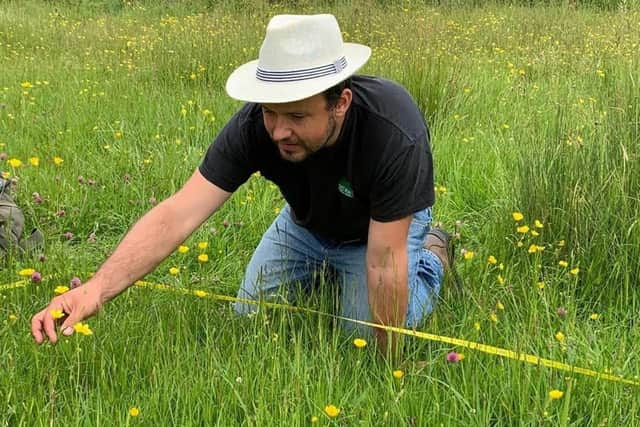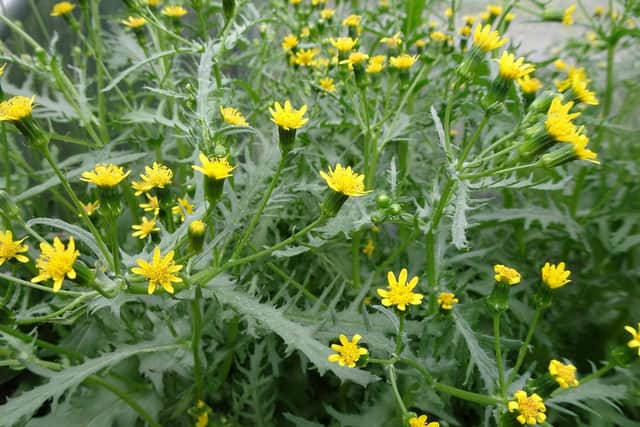'It’s not everyday you have a de-extinction' - Yellow York groundsel reintroduced to city for first time in 30 years
Now, thanks to the efforts of various experts and enthusiasts, the plant has been saved – and it is hoped the York groundsel will be reassessed and changed from ‘extinct’ to ‘threatened’ over the next few years.
“We don’t really understand yet how it’s going to fit into the urban environment,” says Alex Prendergast, a senior plant specialist at Natural England. “But it flowers in every month of the year and it’s quite a showy thing so we suspect it’s going to have quite a useful role for urban pollinators. Also it’s an interesting point to be able to talk to people in York about urban biodiversity as well.”
Advertisement
Hide AdAdvertisement
Hide AdAlex works on species recovery projects, as part of Natural England’s flagship Species Recovery Programme, focusing on bespoke conservation action to reverse the fortunes of the country’s most threatened native species.


The York groundsel rescue involved a seedbank, plants being grown on a windowsill, an unsuccessful reintroduction attempt at a university campus and the use of a polytunnel.
Partners in the project included the Rare British Plants Nursery, which cultivates some of the rarest and under threat native British plants for restoration and recovery programmes and scientific research, and the Millennium Seed Bank, a collection of over 2.4 billion seeds from around the world, which are banked to conserve for the future
The latter provided seeds for the project, which were then grown in a polytunnel environment and harvested twice daily. Once a jam-jar full of new seeds had been collected, they were put into plots owned by York City Council and Network Rail in York city centre.
Advertisement
Hide AdAdvertisement
Hide AdThat reintroduction to the wild took place from February and now the first plants are flowering, with several thousand more growing in the city and set to follow suit.


“This species evolved in York, it has only ever lived in York so it’s a York endemic,” says Alex. “It never moved out of the city in the 20 years that it existed before so that’s why we have focused on York. It may well move out and spread along the railway lines a bit but I think it will always be a special York plant.”
"It’s not everyday you have a de-extinction,” he adds. “York groundsel is particularly special and worth the work as it’s an English endemic so we have international responsibility for it. It’s only ever lived in England so it’s only us that has the space for it.
“Certainly there’s other species we could potentially bring back. Though there’s not many English endemics that we’ve lost where we still have the genetic resource for them to be brought back. It’s testament to the skills of the Millennium Seed Bank that we still had viable seeds of this species.”
Advertisement
Hide AdAdvertisement
Hide AdThe plant, whose scientific name is Senecio eboracensis, has been hailed as a potential flagship species for urban conservation. More seeds are currently being collected to be dispersed in further plots, to booster the plant’s population and volunteers have been trained to monitor the plant and record its development as it begins to flower and spread around the city.
Alex is hopeful for its development and explains how when the York groundsel went extinct in the early 1990s, it was on the back of a series of poor flowering years and so the plant did not have a great foothold in the city.
"It never had a huge population in York, there was probably a maximum of a few hundred plants around the city centre,” Alex says. “It never had a really good year to get a good foothold. It was lost through a combination of loss of brownfield habitats as the city developed and also through the use of weedkillers.
"It’s a species that can cope quite well with weedkiller use because it has such a short generation time...it comes back quite quickly. But because weedkiller in the early 1990s hit this emerging population, it wiped it out completely.
Advertisement
Hide AdAdvertisement
Hide Ad"I suppose that threat is still there...But we’ve got lots of different plots around the city. There’s several thousand plants now which is probably more than the ever has been around York so we’ve given it a reasonably secure foothold and we’re going to be bolstering that population over the years.”
